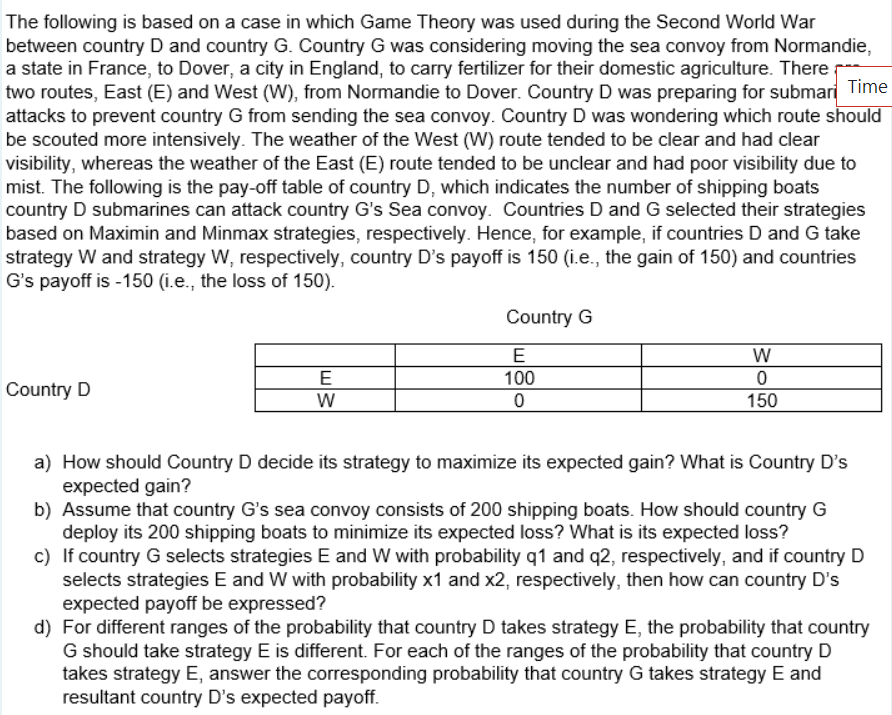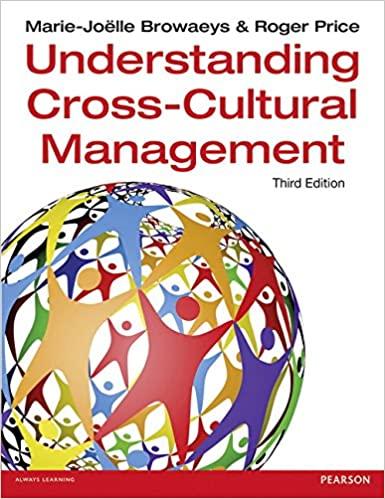Answered step by step
Verified Expert Solution
Question
1 Approved Answer
The following is based on a case in which Game Theory was used during the Second World War between country D and country G.

The following is based on a case in which Game Theory was used during the Second World War between country D and country G. Country G was considering moving the sea convoy from Normandie, a state in France, to Dover, a city in England, to carry fertilizer for their domestic agriculture. There two routes, East (E) and West (W), from Normandie to Dover. Country D was preparing for submari Time attacks to prevent country G from sending the sea convoy. Country D was wondering which route should be scouted more intensively. The weather of the West (W) route tended to be clear and had clear visibility, whereas the weather of the East (E) route tended to be unclear and had poor visibility due to mist. The following is the pay-off table of country D, which indicates the number of shipping boats country D submarines can attack country G's Sea convoy. Countries D and G selected their strategies based on Maximin and Minmax strategies, respectively. Hence, for example, if countries D and G take strategy W and strategy W, respectively, country D's payoff is 150 (i.e., the gain of 150) and countries G's payoff is -150 (i.e., the loss of 150). Country D Country G E E W 100 0 W 0 150 a) How should Country D decide its strategy to maximize its expected gain? What is Country D's expected gain? b) Assume that country G's sea convoy consists of 200 shipping boats. How should country G deploy its 200 shipping boats to minimize its expected loss? What is its expected loss? c) If country G selects strategies E and W with probability q1 and q2, respectively, and if country D selects strategies E and W with probability x1 and x2, respectively, then how can country D's expected payoff be expressed? d) For different ranges of the probability that country D takes strategy E, the probability that country G should take strategy E is different. For each of the ranges of the probability that country D takes strategy E, answer the corresponding probability that country G takes strategy E and resultant country D's expected payoff.
Step by Step Solution
There are 3 Steps involved in it
Step: 1

Get Instant Access to Expert-Tailored Solutions
See step-by-step solutions with expert insights and AI powered tools for academic success
Step: 2

Step: 3

Ace Your Homework with AI
Get the answers you need in no time with our AI-driven, step-by-step assistance
Get Started


